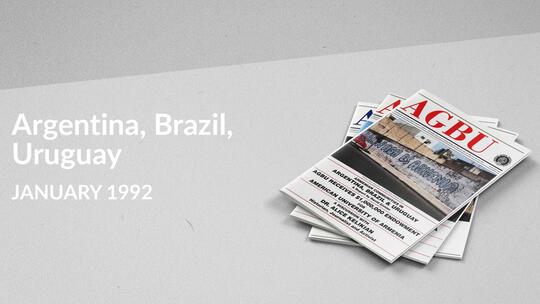by Louise Manoogian Simone
It was only a few years ago when the doors of the Araratian Diocese in Yerevan were locked shut at 5 p.m. All religious institutions were subjected to severe scrutiny by the Soviet government with only a small percentage of the population daring to be baptized, married or buried in the church. Clergy were not allowed to visit the sick in hospitals or even dress as clergy outside of the church.
Gorbachev was responsible for the first steps in easing the restrictions but independence has brought a totally new spirit and freedom to the church and to the religious life of the people of Armenia.
Nowhere is it more evident than at St. Sarkis, the largest church in Yerevan. Parents with their children in tow are learning the Lord's prayer for the first time, singing sharagans, watching religious films, taking English classes, forming choirs, dance groups, orchestras, organizing parish councils, ladies committees and youth associations. The church prints a newsletter (formerly taboo. Even the copying machine had to be hidden behind closed doors) and a youth paper monthly. The computer room staff is busy preparing religious instruction manuals for teachers-in-training, church music scores and pamphlets with the Lord's prayer and Bible excerpts.
Years ago, the church was a high income producing institution, the sale of candles far outweighing the expenses of salaries and maintenance of the few existing churches allowed. A generous gift for "Peace" was even given each year to the Soviet government.
All this is a thing of the past. Soaring inflation and expanding programs have seriously affected the budget of the church. Maintenance of buildings and renovation of historic churches (all of which have been returned to Etchmiadzin after 60 years) has zoomed to ten times last year's cost. The purchase of cars (each church used to be allowed one) and busses to transport clergy, parishioners and teachers to services and various activities has increased from 50,000 rubles to 500,000 rubles. The cost of gas now several hundred thousand rubles a month. Salaries have been raised from 400 rubles to 2000. The sale of candles (the only income the church receives, there is no membership) is no longer adequate.
The shortage of clergy is another hardship. Not only serving the expanding number of churches and parishioners in Armenia, many are asked to fly to various republics where communities are without any priests.
It is the church that will renew the moral and spiritual life of the country. Only recently a mother turned to me while I was observing a class at the Araratian Diocese to say "We are so grateful to Bishop Karekin (Primate of the Araratian Diocese). My son's whole personality has changed since he started coming here. His grades have improved and he rushes home from school in order not to be late for church classes."
With churches all over the world, how nice it would be if each one established a relationship with a church in Armenia, providing the resources in this particular time of need and hardship. It is an investment beyond measure.
The Araratian Diocese has also established a seminary in Sevan. Twenty-five students are enrolled in a five year theological studies program. The Seminary of Holy Etchmiadzin, established thirty-five years ago, has an enrollment of one hundred and twenty-five.






